The physical and psychological toll that years of imprisonment took on Mary are well known; the entire time she furiously protested that as an anointed queen of Scotland, she was not a subject of England and should be freed.
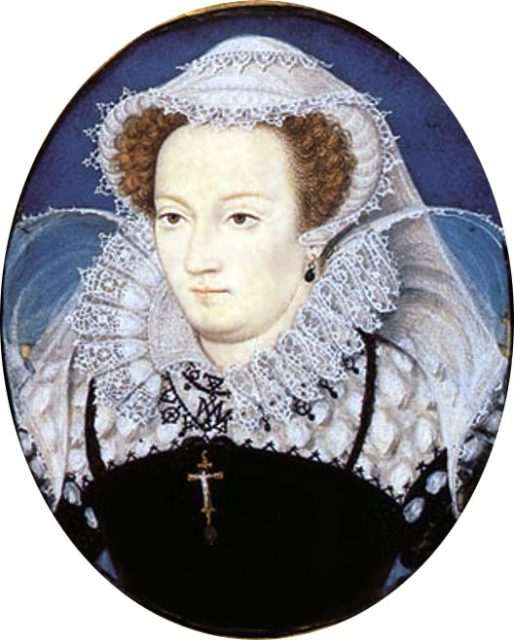 |
| Mary in captivity, by Nicholas Hilliard, c. 1578. |
Now, thanks to an ambitious excavation and research project launched in the late summer of 2018, a virtual model has been created of one of Queen Mary's castle prisons in the 1500s.
Viewing it brings into focus Mary's daily existence as Elizabeth's rival and enemy for 14 years at Sheffield Castle, once one of northern England's most impressive castles but destroyed by Oliver Cromwell's parliamentarians in 1646.
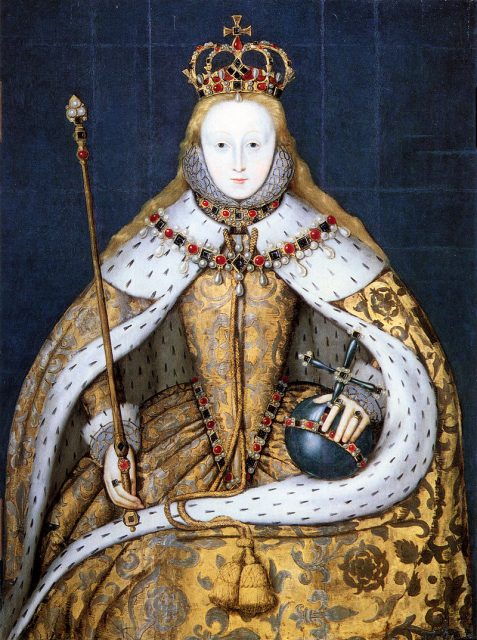 |
| Elizabeth I in her coronation robes, patterned with Tudor roses and trimmed with ermine |
Ron Clayton, of the Friends of Sheffield Castle group, told The Guardian in August he was delighted that work finally got underway. “In its day, Sheffield castle overlooked the village of Sheffield. This has seen the thunder of war, the rattle of the drum, the blast of the cannon; people have been killed fighting to take possession of this castle,” he said.
“It’s a great day,” Clayton said. “This is going to give Sheffield a whole new identity in the 21st century.”
The new virtual model was developed by creative agency Human and by computer scientists from the University of Sheffield.
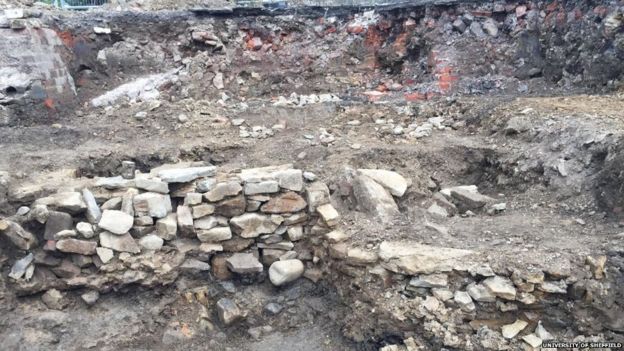 |
| Sheffield ruins |
Professor Dawn Hadley told the BBC: “Sheffield Castle was almost completely destroyed during the English Civil War and most of what does remain of its original structure has been hidden away from the public for hundreds of years.”
The large castle's remains were covered by an indoor market in the 1960s, but it closed five years ago.
 |
| The plan of Sheffield Castle in relation to current buildings. Photo by Gregory Deryckère CC BY 2.5 |
Professor Hadley said, “The castle and its history are largely unknown. But now we hope that with the creation of this augmented reality experience people will be able to see the castle in all of its glory and learn more about its fascinating history.”
Mary, Queen of Scots was confined at Sheffield Castle between 1570 and 1584, as the “guest” of one of Elizabeth's leading noblemen, the Earl of Shrewsbury.
During that period, Mary was waited on by her ladies, gentlemen, and servants and insisted on a cloth of state being mounted. It is clear that her imprisonment, all things considered, was a comparatively comfortable one.
Mary was driven out of her kingdom by an army led by her disaffected Scottish nobles.
She was accused of having been part of the murder conspiracy to eliminate her second husband, Henry, Lord Darnley. Some of the nobles who accused her had in reality been deeply involved in the murder of the widely hated Darnley, the father of James VI of Scotland and eventual James I of England. Mary's involvement in her husband's death has been hotly debated for centuries. His house was blown up with gunpowder, and he was found, strangled, near the smoking ruin.
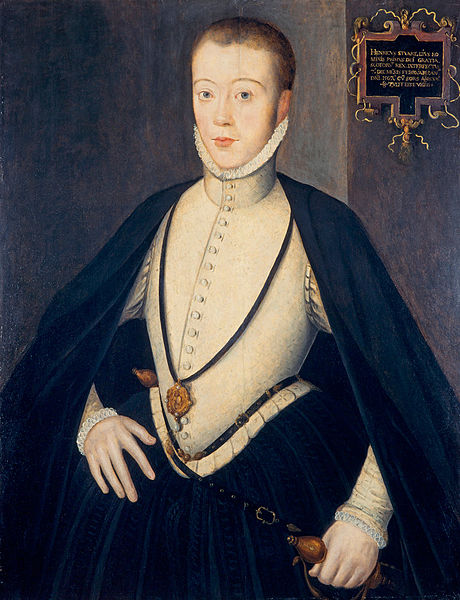 |
| Lord Darnley |
Mary's hasty marriage to her third husband, the swaggering Earl of Bothwell, definitely one of the circle who killed Darnley, did nothing to support her claim of innocence.
After losing a battle in 1568, Mary decided to go south to seek support from her cousin, Elizabeth, in retaking Scotland. But to Protestant Elizabeth, the Catholic Mary had long been a focus of disaffected Catholics in her own kingdom, and she was reluctant to put her back on the throne.
Instead, Elizabeth cut a deal with the nobles and supported the reign of the very young James.
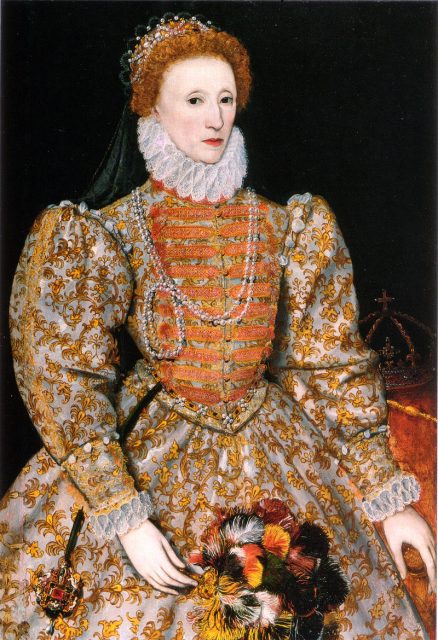 |
| The Darnley Portrait |
Plots were bubbling for years aimed at freeing Mary from Sheffield, with some of them ousting Elizabeth and putting Mary on the English throne. The Earl of Shrewsbury was often berated by Elizabeth for lax security measures, while he protested he did his best.
During her years at Sheffield, Mary's health deteriorated, caused by lack of exercise due to escape fears and the damp environment inside the castle walls. The queen suffered from severe rheumatism, arthritis, and “dropsy.”
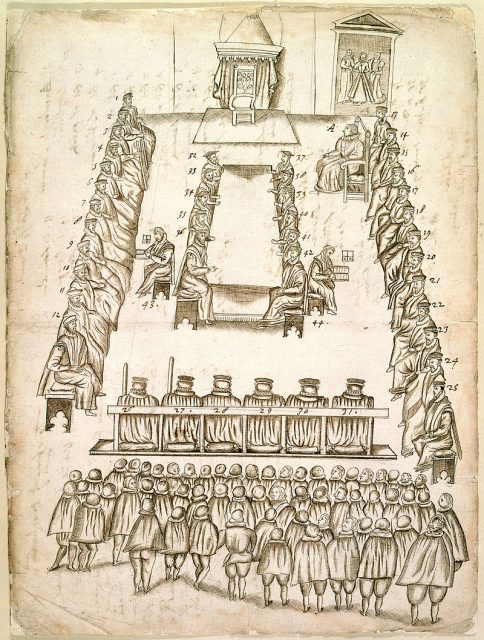 |
| Drawing of the trial of Mary, Queen of Scots, October 14–15, 1586.[/caption] |
The Earl of Shrewsbury's high-tempered wife, Bess of Hardwick, volleyed between being friends with Mary, and joining her for daily gossip and embroidery, and accusing her husband of having an affair with the still-beautiful queen of Scotland. Such accusations were denied by both parties. As treasonous suspicions darkened around Mary, she was removed from Sheffield for castles with stricter security, and harsher jailers as well.
After a trial during which she claimed innocence, Mary was executed at Fotheringay Castle. The nervous headsman required three blows of the ax to sever her head. For a number of minutes, her lips still moved, traumatizing the noblemen who witnessed her death, including the earl of Shrewsbury, who burst into tears.
It is a death that centuries later affects us still.
-----------------------------------------------------------------
Nancy Bilyeau is the author of a trilogy set in Tudor England, The Crown, The Chalice, and The Tapestry, available in nine countries.
Her new historical novel, The Blue, is a thriller set in the 18th century world of art and porcelain.
No comments:
Post a Comment